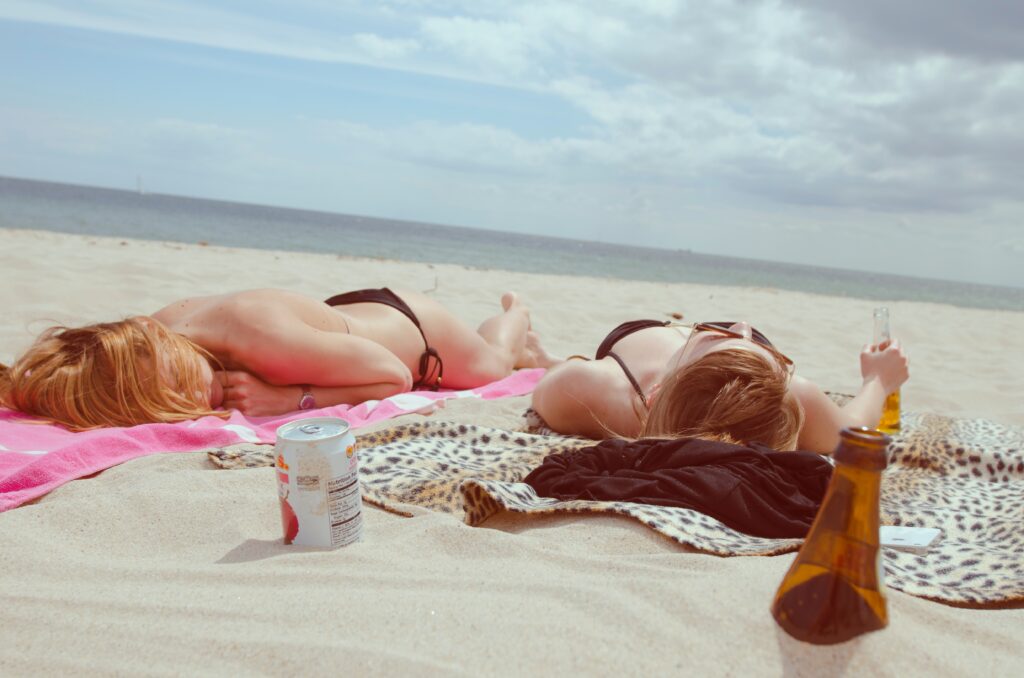
My skin is naturally very pale, and while I’m very much at ease with my genetic predicament, there are moments when I would like to don a more sun-kissed look. I spent years half-dreading my Italian summers as I would irrevocably draw a little tragic-comic attention on the beaches and piazzas. Beyond my insecurity, a little research made the objective of having healthy, tanned skin not only achievable, but quite easy to attain.
This article is a summary of methods and solutions that truly work for any type of skin (if it works for me, it’ll work for you, trust me), whatever the weather. Some methods will involve a great deal of patience and will need to be fit into a routine, others are near-instant but will have their own set of pros and cons. Here we will talk about:
- Tips for tanning if you burn easily
- Fake tans and techniques for a golden glow
- Foods that help boost melanin production
- Indoor tanning bed tips for pale people
- How to make a tan last
- Tanning safety for fair-skinned people
- Whether or not sunlight is good for you
- UVA, UVB, UVC rays and the UV index
Tips for Tanning If You Burn Easily
Before we begin looking at what methods may suit you on your quest to get a tan with fair skin, here’s a brief and concise look at how protect yourself from the risks of skin cancer and overexposure. Sun protection is absolutely necessary for fair-skinned and dark-skinned people alike.
How to Protect Your Skin
- Ideally, pale skin should be constantly protected with sunscreen with a Sun Protection Factor (SPF) rating of at least 30. Make sure your sunblock is capable of blocking both UVA and UVB radiation.
- Even under a newly refreshed layer of sunscreen, limit sun exposure to before 10 AM and after 4 PM to avoid burning and damaging the skin.
- If you burn in the sun, you’ll burn in a tanning bed. Allow some time to pass between tanning sessions.
- Skin that is covered more often will be more likely to burn.
- Know that spray-on DIY tans do not increase your skin’s ability to withstand the sun and tan more easily.
Fake Tans (Sprays and Lotions) for a Golden Glow
The idea that naturally tanned skin is healthier is a common myth and easily dispelled with a little research. For many of us, contemporary fake tanning agents allow us to shake up our look without damaging our skin. Many people are now catching on and employing them as part of their everyday cosmetic routine (roughly 9% of people in the U.S. use self-tanners).
Best Tanning Products for Pale Skin
There are many ways to avoid looking cheap with a fake tan. You can further research tips on streak-free application and recommended sunless tanning products for pale skin. Here are a few different types of products and services to consider:
- Dyes: These are natural vegetable dyes that stain the skin in authentic-looking tones which fade over the course of a few days.
- Bronzers: Unlike dyes, these wash off with soap and water, giving you more flexibility.
- Tan Catalyzers: These products claim to speed up tanning by stimulating melanin production (I have not tried these myself).
- Beauty Salons: They use high-quality sprays to uniformly achieve a perfect, customized tan. They can be expensive!
Bear in mind that while you may marvel and strut around proudly in the sun with your new tan, artificial tans offer no additional protection from the sun! You will need to continue to use high-protecting SPF sunscreen.
Exfoliation Is Key
The key to successful tanning is exfoliation. Be sure to exfoliate before your tanning session. Not shaving and not waxing and having dry skin is more likely to make a tan fade fast.
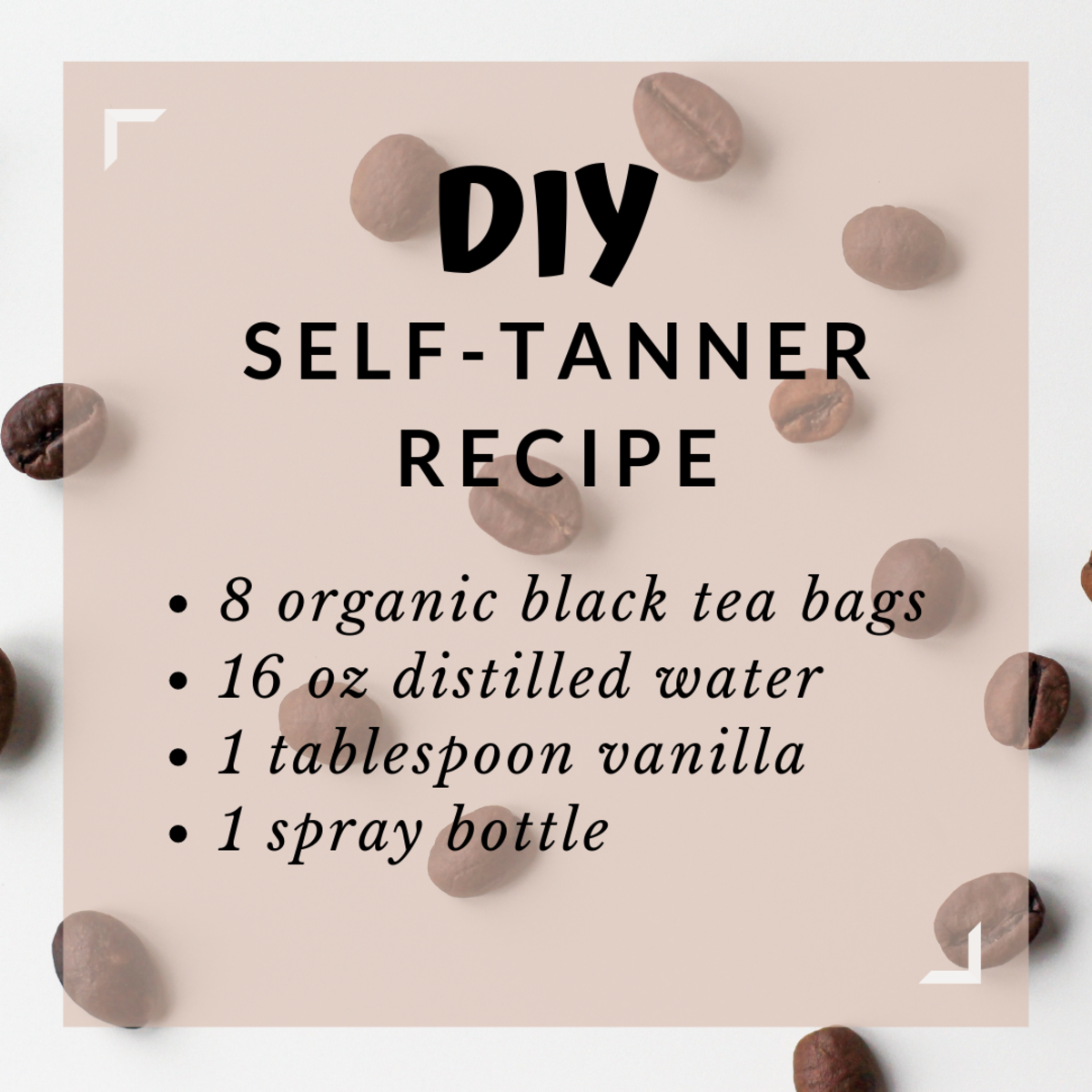
DIY Natural Tanning Spray Recipe
Natural tanners are fun and easy to make and contain natural ingredients. Here’s a fun recipe from DIYNatural.com that utilizes organic black tea bags and vanilla extract. Here’s what you will need:
Supplies
- 8 bags of organic black tea
- 16 oz filtered water
- 1 tablespoon vanilla extract
- 1 spray bottle
Instructions
- Boil 16 oz of filtered water and the vanilla extract.
- Pour the boiling water over the tea bags. Let steep for 8 minutes and remove the tea bags.
- Let the mixture cool for 30 minutes minimum, then transfer it to a spray bottle.
- Exfoliate and apply 4-5 layers of tanner to the desired area; let each application dry in between. Rub the spray in with your hands and wash your hands thoroughly afterward.
Foods That Help Boost Melanin Production
Melanin can actually help protect the skin from ultraviolet radiation and skin damage and its production is thought to be supported by antioxidant-rich foods like dark, leafy greens, dark berries, dark chocolate, and colorful vegetables. Scientific data continues to emerge on the possible melanin-boosting properties of these superfoods.
- Flavonoids or polyphenols: Found in green tea and turmeric.
- Vitamin A (retinol): Found in beta carotene containing foods (carrots, spinach, peas) and orange vegetables (squash, sweet potatoes), fish, and meat.
- Vitamin C: Found in citrus, berries (strawberries), and leafy greens.
- Vitamin E: Found in vegetables, grains, seeds, and nuts.
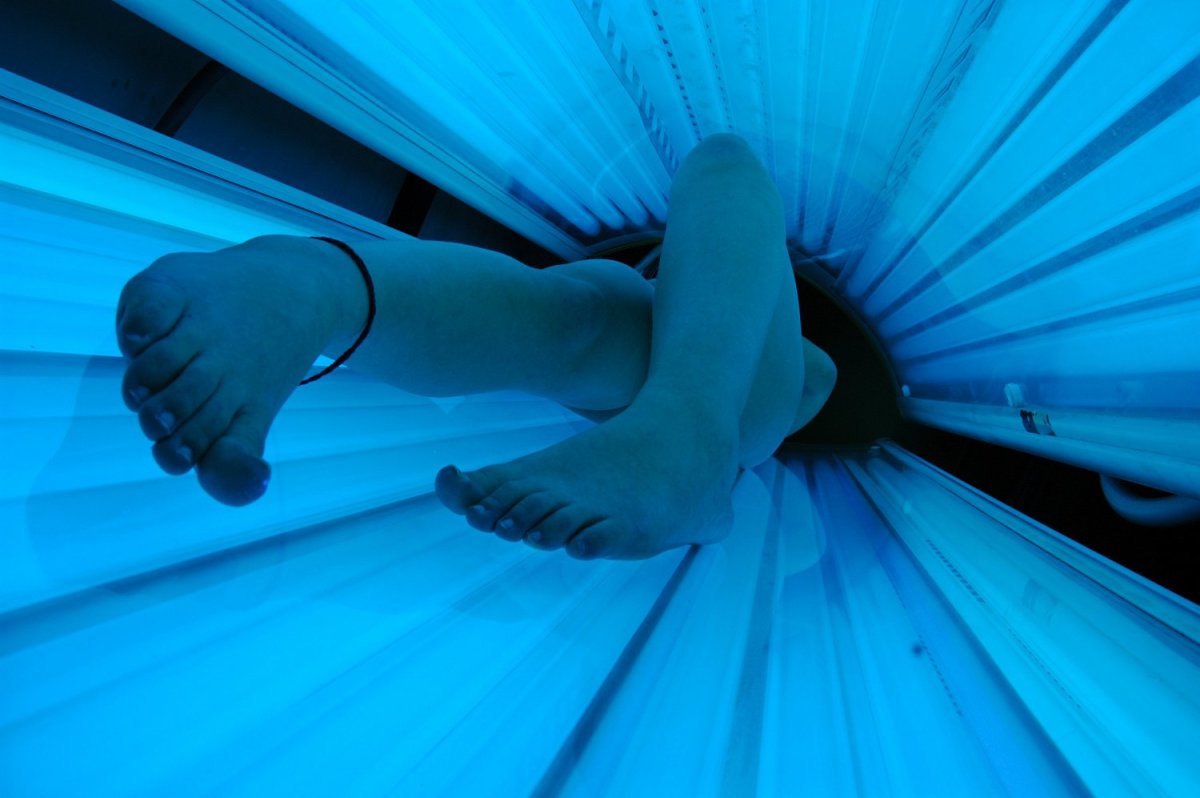
Indoor Tanning Bed Tips for Pale People
Aside from the risk of skin damage and cancer, many people who use sunbeds or tanning beds claim they offer secondary benefits which make it worth all the hassle. It’s thought that exposure to sun-mimicking UVB rays can lead to a sense of relaxation and well-being and is an effective cure for some forms of dermatitis and psoriasis which we will cover further down.
Are Tanning Beds Safe?
Tanning beds are something of a mixed bag with regards to tanning fair skin. On one hand they can, if used patiently and sensibly, lead to natural, long-lasting results, but on the other, they present many of the same risks that traditional tanning entails. If you are every bit as fair-skinned as I am, tanning beds should not be considered. If you do happen to opt for tanning bed use, there are natural products you can use to accelerate your tan. Use them carefully.
Reports published by the World Health Organization and Cancer Research UK make clear the dangers involved, especially if you:
- Have freckly skin or natural red hair
- Have skin that burns easily
- Have a large number of moles
- Take certain medications that increase your sensitivity to UV light
- Are underage
Tips for Safe Tanning Sessions
If you satisfy any of the above, then there are important cancer risks to consider. If you decide to go for a tanning session any way, limit your sessions to a few minutes and gradually increase over the course of a few weeks. Taking 24 to 48-hour intervals between tans can lead to a decent, healthy-looking tan. But remember that it is only healthy-looking—any sign of redness indicates damage to the skin.
How to Make a Tan Last
Our skin cells shed regularly, so before any tanning procedure for any skin type or tone, be sure to exfoliate. It is a good idea to get your shaving or waxing done ahead of time whether you are going out in the sunlight for a natural glow, using a tanning bed, or using a DIY-indoor tanning spray or moisturizer.
Also, be sure to keep your skin moisturized. After exfoliating (consider making a DIY exfoliating scrub), give your skin some time to rest. Always apply sunscreen before exposing your skin to sunlight even if you have a good base tan or dark skin, and be sure to moisturize post-exposure with creams or lotions with natural ingredients—jojoba, coconut oil, etc.
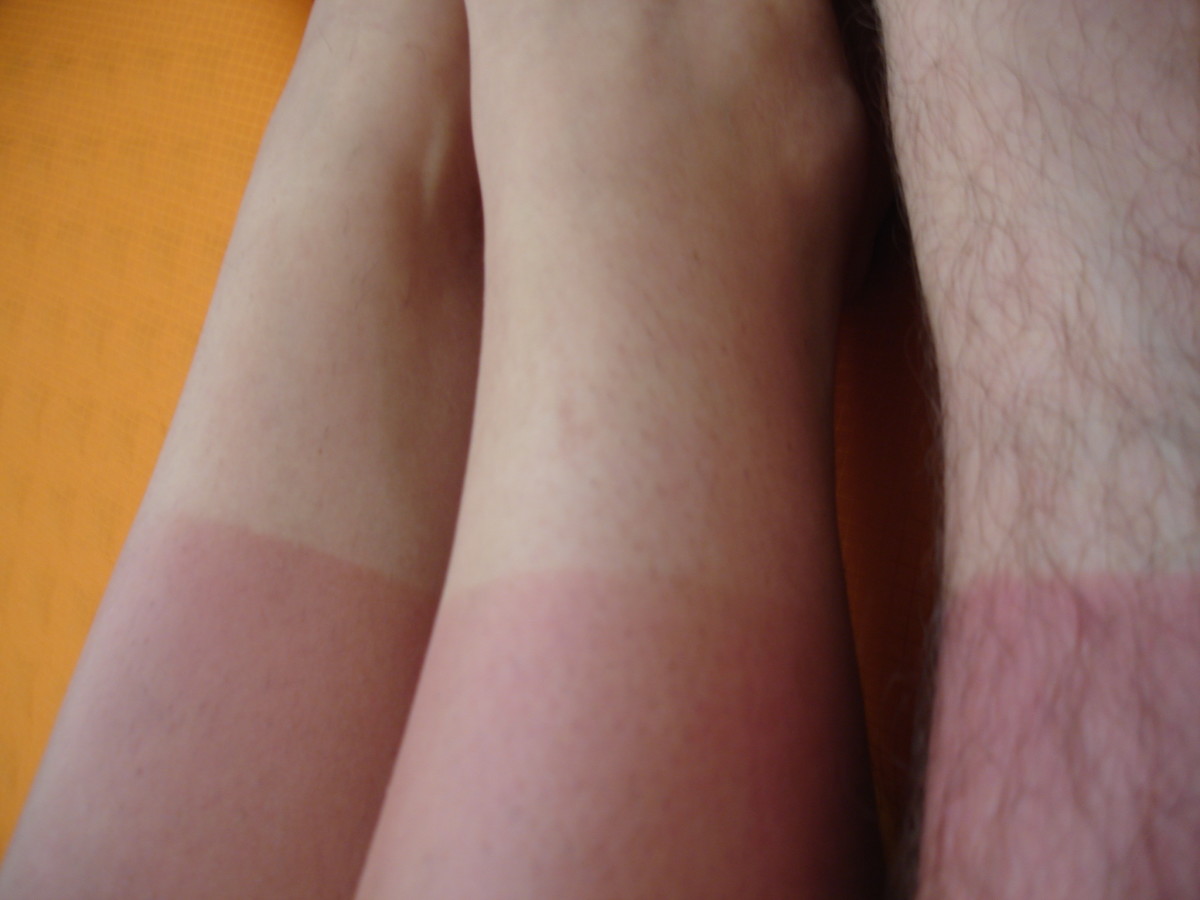
Tanning Safety for Fair-Skinned Individuals
All radiation or ultraviolet (UV light) is classified on the electromagnetic spectrum by range. Electromagnetic radiation (EM) refers to photons (energy particles) that travel at different speeds. The sun produces UV radiation: UVA, UVB, and UVC rays.
Which UV Rays Are Harmful?
Both UVA and UVB rays cause damage. Skin cancer and premature aging result from long-term overexposure to these rays, whereas a sunburn signifies immediate overexposure.
But Isn’t Sunlight Good for You?
You do need some exposure to UVB to help your body to produce vitamin D (D3) which couples with calcium to maintain healthy bones in the body. The amounts we are required to get on a daily basis will vary based on skin tone, clothing, geographic location, the time of year, and diet.
There are some cases where ultraviolet light exposure or phototherapy has helped to resolve the following conditions, but this is done in a controlled environment by a professional:
- Rickets
- Psoriasis
- Eczema
- Vitiligo
- Lupus
Ultraviolet (UV) Radiation Classification
| Type | Wavelength | Penetration | Risks |
|---|---|---|---|
| UVA | Long | We come into contact with these rays the most. They reach the outer layer of our skin or epidermis and can penetrate untreated glass. | Sun damage; aging, wrinkling, skin cancer, and eye damage. |
| UVB | Medium | These rays can penetrate the dermis or middle layer of our skin. UVB rays are strongest between 10 am and 4 pm in warmer months. | Sun damage; responsible for sunburns, skin cancer, aging, and eye damage. |
| UVC | Short | UVC rays only reach us via artificial sources (lamps, lasers). | The most dangerous form of radiation but exposure is rare (welding, torches, etc.) |
Pay Attention to the UV Index
If you are considering tanning or outdoor activities and have fair or freckled skin, you should pay attention to the UV index (UVI) in your region, which rates the number of UV rays that are reaching the Earth’s surface. The higher the number, the more precautions you should take, especially of you are pale or fair-skinned.
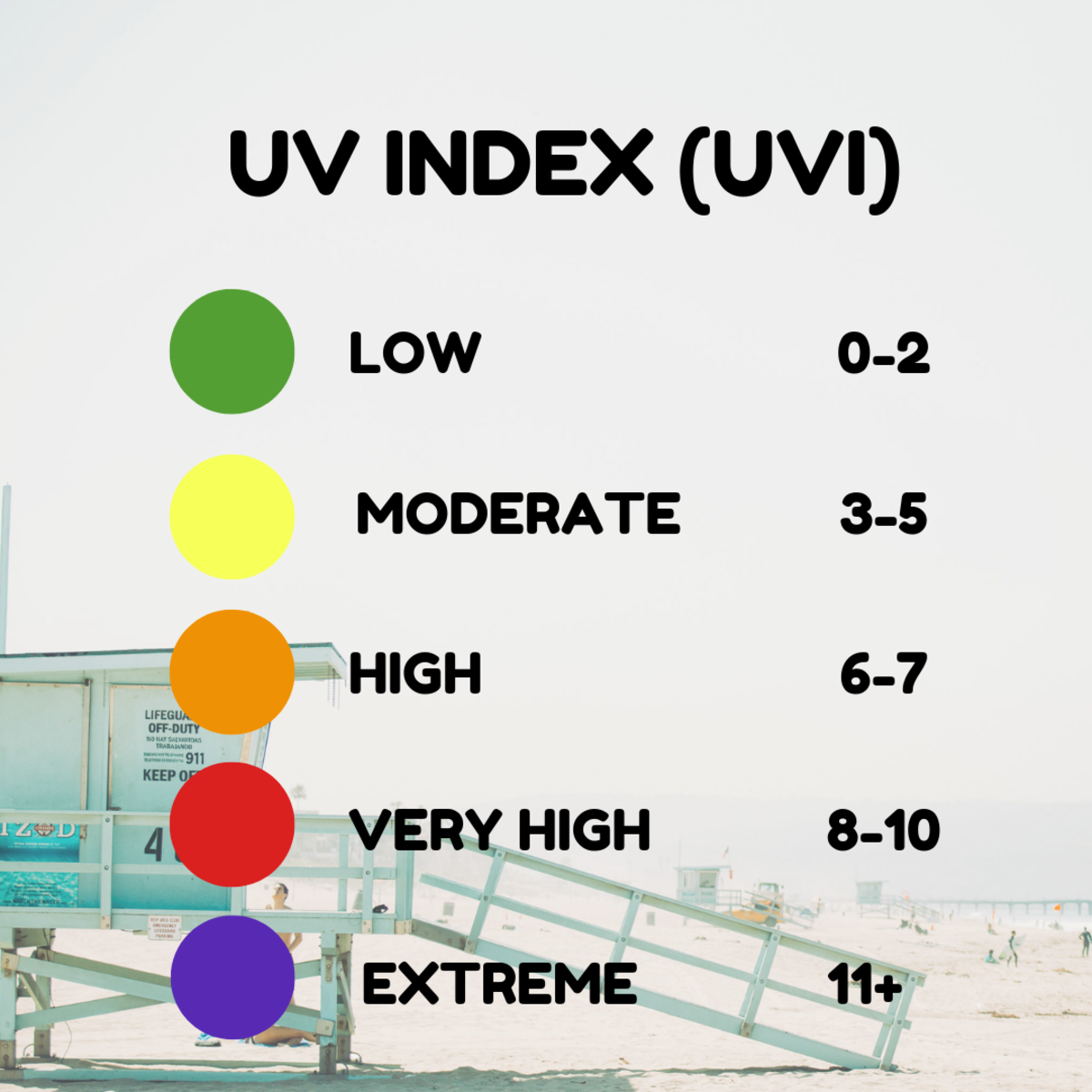
Remember: No Tan Is Worth a Burn
Achieving a solid tan on fair skin involves taking it easy. Getting a mild burn is absolutely not required to get some color, in fact, it is counter-productive. If you’re getting red, you’re going too fast. As a rule of thumb, do not attempt to bravely soak in the sun between 10 AM and 4 PM—you won’t be doing yourself any favors. Instead, abide by the following safety tips:
- Refresh your 30 SPF sunscreen every two hours. Make sure it’s still on when you come back from a swim. Also, make sure that it is waterproof or water-resistant if you go in the water.
- Prevent flaking by keeping your skin moisturized at all times, especially after a day on the beach.
- Eat foods that are thought to enhance tans (beetroot, carrots, oranges).
- If in doubt, remember that you can tan in the shade!
I hope this article has been of help and was not an overly depressing read (it certainly wasn’t my intention)!. If you have any personal tips to share, please do so in the comment section, thanks!
